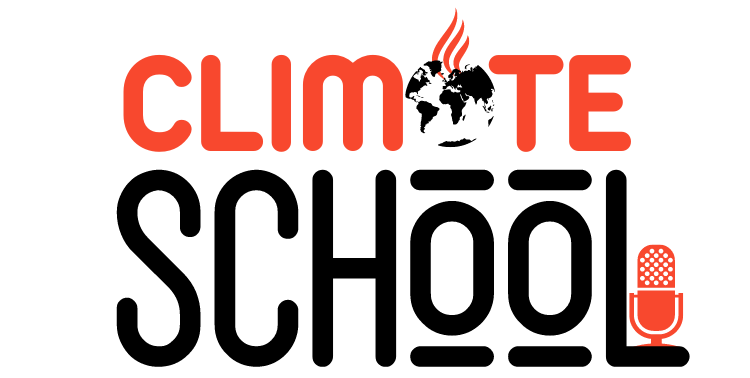Copied from Raseef 22 website, published on Sunday, July 16, 2023 You can refer to the original link from here
Written by Alia Abu Shahba
Coral reefs are considered one of the most beautiful natural landmarks around the world. They attract tourists to practice marine sports and enjoy watching them due to the beauty of their colors and their attraction to colorful fish, which are a species of invertebrates that have a solid skeleton.
But these reefs are facing the risk of bleaching due to climate change, which increases the temperature of the seas and oceans, which leads to an increase in calcium, which leads to the death of the reefs.
according to a report Prepared by the Global Coral Reef Monitoring Network Between 2009 and 2018, the world’s reefs gradually lost approximately 14% of coral, as a result of repeated and widespread bleaching events, and the planet lost approximately 11,700 square kilometers of hard coral, which is more than all Coral currently lives among the reefs of the coast of Australia. The United Nations Environment Program described the matter as “coral reefs on the brink of disappearance due to climate change.”
It also helps Reports Reports from the United Nations indicate that 70% of the world's coral reefs are under threat, with 20% already destroyed with no hope of regrowth, 24% at risk of imminent collapse, and an additional 26% at risk of longer-term threats.
And in 2015 She declared The US National Oceanic and Atmospheric Administration announced the recording of the third global coral bleaching event of its kind, which affected the reefs of the Red Sea, especially in its southern part.
All of this prompts researchers and specialists around the world to search for solutions to stop the deterioration of this natural wealth, and even to work to restore its health as much as possible.
Sexual and asexual reproduction
Breaking part of the coral reef and replanting it in another place, what is known as “coral reef farming,” is one of the well-known methods for increasing the number of coral reefs, but it receives many reservations, due to its ineffectiveness in many cases, which can lead to increased coral loss. But not due to climate change this time, but rather through deliberate human actions.
Doctor Mahmoud Hanafi Professor of Marine Ecology at Suez Canal University, and environmental advisor to the Environmental Conservation Society.”HepkaHe expressed his rejection of this method, explaining that it is not scientific. He told Raseef22: “In order to understand the matter, the idea of farming has two methods. The first is asexual reproduction by breaking the coral and replanting it in another place.” But it is not the ideal method, as it results in a weak colony.”
Researchers have worked to develop protocols and frameworks on how to restore the “coral microbiome” bacteria that live on the surface of reefs, and can be effectively used to protect against various threats such as heat stress, disease, and oil spills resulting from oil tankers.
He continues his speech by saying that the second method, which is the best according to many scientific researches, depends on sexual reproduction, where corals reproduce by releasing an egg and sperm. Fertilization occurs and the larva emerges and floats in the water. When it lands on the appropriate surface, a coral colony is produced. The sexual method is considered the best because it Naturally, especially since the timing at which coral reefs shed eggs and sperm is known, mass reproduction occurs, and it is possible to place solid surfaces that receive the product of the reproductive process, and the product can be planted elsewhere.
What we need today is environmental culture
We are proud to be one of the few leading Arab institutions in the field of raising environmental awareness. Despite the dullness that climate issues may make us feel, we at Raseef22 are determined to talk about them. We simply aspire to a better tomorrow. There is no future for us and for our Arab region if it is engulfed by the nightmare of the Waste Land, and it becomes barren with no water or greenery.
Hanafi explains the problem of asexual reproduction, which is characterized by the fact that it results from either male gametes or female gametes, which are therefore genetically weak, which affects the strength of the colony, so its immunity is weak and it is easy for it to contract diseases. He likens this method to consanguineous marriage, which leads to the emergence of hereditary diseases. He pointed to the experiences of other countries, including the experience of the Philippines, which tried to compensate for its wealth of coral reefs that were destroyed due to fishermen using dynamite in fishing, which led to the destruction of their wealth of coral, and the result was failure.
One of the disadvantages of this method, according to the speaker, is that it gives the feeling that it is easy to generate reefs by breaking them and replanting them, while it leads to the destruction of healthy reefs and not the establishment of new colonies.
The speaker believed that Australia is considered the most important country in the field of coral protection research due to the presence of the Great Barrier Reef on its coast, which includes more than 350 species of coral, more than half of which have been lost due to climate change. Today, it relies on sexual reproduction to compensate for the damage to its reefs, which... Recommended At the end of 2022, UNESCO will list it as an endangered World Heritage Site.

Solutions being tested
The doctor adds Raquel Peixoto The researcher in the Department of Microbiology at the University of Rio de Janeiro said that selective sexual reproduction is one of the tools currently being tested, pointing out that the frequency and severity of bleaching events must be considered, as well as the different stages of coral reef degradation and restoration needs.
“I think we will need a variety of tools, including selective breeding, as well as coral probiotics that work to enhance coral health and prevent them from dying due to environmental stressors, in addition to ecosystem management and monitoring,” she tells Raseef22.
Hurghada is the only Egyptian city that needs re-cultivation efforts, because its reefs have been subjected to much destruction.
At the beginning of the year 2022, with the participation of King Abdullah University, Saudi Arabia announced... Opening The world's first coral probiotic village, And probiotics They are nutritional supplements of live bacteria that are beneficial to the host organism, which is coral, and they are one of the new methods used to preserve, restore and rehabilitate reefs.
The researcher also adds about the technology of growing coral reefs in nurseries, and it is considered one of the solutions currently being tested, which she believes could be necessary in some cases, and it could potentially be used with restoration and rehabilitation tools.
Peixoto worked with other researchers to develop protocols and frameworks on how to restore the “coral microbiome” bacteria that live on the surface of reefs, and can be effectively used to protect against various threats such as heat stress, diseases, and oil spills resulting from oil tankers. She adds: “I believe that this “The drug offers a great opportunity to maintain natural coral communities and diversity, as it can reduce coral mortality, promote accelerated coral growth in nurseries, and provide more resilient corals for use in outdoor cultivation.”
Egypt situation
according to the report Issued by the Information and Decision Support Center in the Council of Ministers, Egypt includes more than two hundred species of coral reefs, and the Red Sea contains one of the longest concentrations of living coral reefs in the world, representing about 5% of the global coral cover, and extending for a distance of about 4,000 km from Its coasts.

But the question is: Do coral reefs in Egypt need to be re-farmed? Dr. Hanafi answers by saying that Hurghada is the only city that needs these efforts, because its reefs were subjected to a lot of destruction in the early 1990s and before the establishment of the Environmental Law of 1994, which prohibits encroachment, cutting, selling, or trading in marine organisms and coral reefs.
He pointed out that coral reefs in Egypt may be the last reefs in the world of this length, and they are found inside the seas and not on the edges as is the case in Australia.
Regarding the situation of coral reefs in the Red Sea and whether they are more fortunate than other regions, Dr. Peixoto says that these reefs developed under certain conditions that made them more resilient than other regions, and the features associated with this resilience can be studied and provide valuable data for restoration and rehabilitation efforts in both... The Red Sea and other areas.
Climate negotiations position
Do current negotiations at international climate change conferences include the topic of coral bleaching?
We asked this question to one of the climate negotiators, Dr. Saber Othman, an environmental expert and former coordinator of the Climate Change Convention. He told Raseef22 that the negotiations usually do not include any details, and revolve around how the countries of the developed world provide compensation to developing countries that enable them to adapt to the effects of climate change and try to reduce Of its negative effects, as well as to build its capabilities and increase awareness, education and other matters related to confronting climate change.
One of the approved methods for increasing coral numbers is sexual reproduction, where corals reproduce by releasing eggs and sperm. Fertilization occurs and the larva emerges and swims in the water. When it lands on the appropriate surface, a coral colony is produced. The sexual method is considered the best because it occurs naturally.
Regarding awareness of the risks facing coral reefs, the speaker believes that the majority of people do not have sufficient awareness to link the impact of climate change and the exposure of the marine environment to danger because it occurs indirectly, as a result of rising water temperatures and increasing concentrations of carbon dioxide in the atmosphere, which It leads to an increase in the acidity of sea and ocean water, and consequently damage to reefs as a result of the death of the organisms that give them their distinctive colors.
He continues: “These are the matters that civil society is trying to raise awareness about through campaigns, and at the COP27 climate conference a day was dedicated to biodiversity, but the matter does not include negotiators who are interested in discussing public policies and strategies that enable solving these problems, as discussions are usually concerned with what is related to losses and damages and how Compensation can reach the affected countries, especially with the presence of multiple groups of negotiators, including Arab oil-producing countries, African countries, developing countries, countries and islands threatened with disappearance, and others. Therefore, the conflict of interests between the groups makes the negotiating process difficult and takes a long time.”
In the end, science remains the only hope for confronting the effects of climate change and adapting to it, with the aim of protecting the environment around us, and the coral reefs in our seas are a very important part of it.





